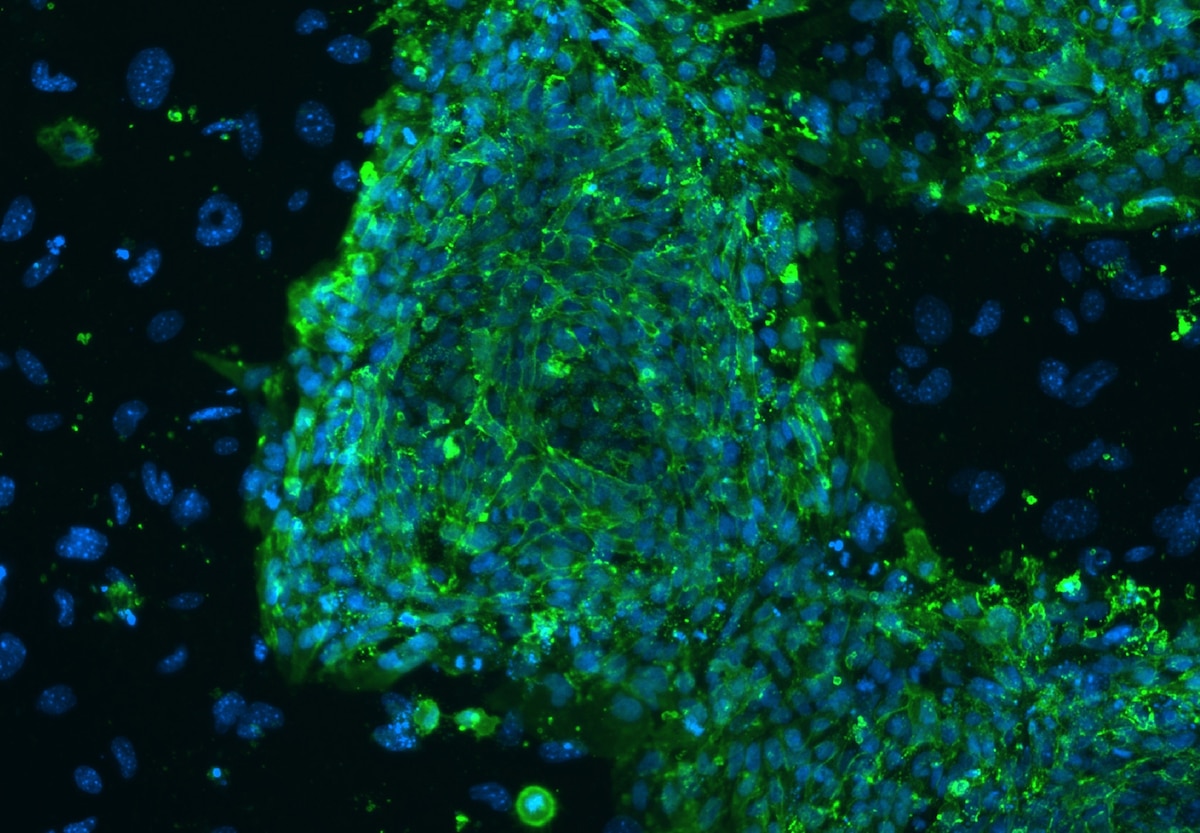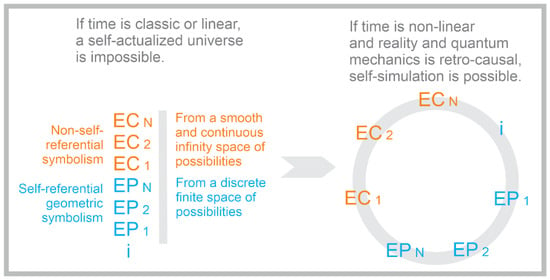You are using an out of date browser. It may not display this or other websites correctly.
You should upgrade or use an alternative browser.
You should upgrade or use an alternative browser.
Role of viruses in human evolution
- Thread starter Altair
- Start date
Fascinating topic, quotes and food for thought. Downloaded the documentary into an mp3 so I can listen to it later.
I remember reviewing a couple of articles that seem to support the information quoted in this thread:

On viral 'junk' DNA, a DNA-enhancing Ketogenic diet, and cometary kicks
"Junk" DNA includes a whole subset of names such as introns, retrotransposable elements, and non-coding RNAs (ncRNAs). In fact, ncRNAs are often located near genes known to be important to both stem cells and cancer, to serve as enhancer elements...www.sott.net
The frustrating thing is that it just transfers all the evolution theory into another planet so to speak, which then comes to this reality via a comet. But how did it originate in the "other planet"? The Cs had some very interesting things to say:

Session 4 March 2012
Session Date: 4 March 2012 Present: Laura, Ark, Belibaste, Perceval, Andromeda, Ailen, Bubbles, PoB, Burma Jones, Psyche, Mr. Scott Rain was in the forecast for this evening, but no storm warnings had been posted. At almost the exact time we had scheduled the session, the wind began to blow...cassiopaea.org
And then, "junk" AKA "non-coding" DNA is related to stem cells:
UCLA Scientists Find 3000 New Genes in “Junk DNA” of Immune Stem Cells

UCLA Scientists Find 3000 New Genes in “Junk DNA” of Immune Stem Cells
Genes and Junk Do you remember learning about Junk DNA when you took Biology in high school? The term was used to described 98% of the human genome that doesn’t make up its approximately 22,000 gen…blog.cirm.ca.gov
‘Junk DNA’ tells mice—and snakes—how to grow a backbone
AAAS
www.sciencemag.org
Ancient Virus DNA Gives Stem Cells the Power to Transform

Ancient Virus DNA Gives Stem Cells the Power to Transform
DNA from a long-ago invader gives human embryonic stem cells the power of transformation.news.nationalgeographic.com
This is how I see it:
Life is a sea of thoughts
Thought forms range from the one-idea to a complex knowledge of the infinite
Thoughts create matter
Viruses are the simplest form of life-imbued-matter
Viruses are Thoughts made manifest
Viruses can mutate by adding/subtracting thoughts
DNA is a relational database of thoughts
Viruses can append/delete thoughts to the DNA relational database
The viral altered DNA changes the inter-relationship of specific or group thoughts
The effect of the viral altered DNA on the organism ranges from very good to very bad and is dependent upon the organisms FRV
Therefor, the thoughts that we manifest determines how we are affected by Thoughts made manifest!
Thoughts Made Manifest
To further the idea of thought centered universe there is a new hypothesis that the universe is a self simulating existence of pure thoughts.
If I understand C's teaching of our multidimensional existence this new hypothesis seems to describe the universe as the way the C's have.
From the article: The Self-Simulation Hypothesis Interpretation of Quantum Mechanics
(This may belong to another forum.)
"But where does the physical reality that would generate the simulations comes from, wonder the researchers? Their hypothesis takes a non-materialistic approach, saying that everything is information expressed as thought. As such, the universe "self-actualizes" itself into existence, relying on underlying algorithms and a rule they call "the principle of efficient language.""
"Under this proposal, the entire simulation of everything in existence is just one "grand thought". How would the simulation itself be originated? It was always there, say the researchers, explaining the concept of "timeless emergentism". According to this idea, time isn't there at all. Instead, the all-encompassing thought that is our reality offers a nested semblance of a hierarchical order, full of "sub-thoughts" that reach all the way down the rabbit hole towards the base mathematics and fundamental particles. This is also where the rule of efficient language comes in, suggesting that humans themselves are such "emergent sub-thoughts" and they experience and find meaning in the world through other sub-thoughts (called "code-steps or actions") in the most economical fashion."
_________________________________
Question: Are space, time and physical constants such as gravity sub-thoughts? Are the physical constants mathematical equations plus a connected thought form?
Continuing with the article;
_________________________________
If all of this is hard to grasp, the authors offer another interesting idea that may link your everyday experience to these philosophical considerations. Think of your dreams as your own personal self-simulations, postulates the team. While they are rather primitive (by super-intelligent future AI standards), dreams tend to provide better resolution than current computer modeling and are a great example of the evolution of the human mind. As the scientists write, "What is most remarkable is the ultra-high-fidelity resolution of these mind-based simulations and the accuracy of the physics therein."
_________________________________
(Our dreams are our own universe! This opens up a whole new approach to dream work.)
_________________________________
The team also proposes that in the coming years we will be able to create designer consciousnesses for ourselves as advancements in gene editing could allow us to make our own mind-simulations much more powerful. We may also see minds emerging that do not require matter at all.
_________________________________
Sounds like the team is proposing that we will become our own gods!
Original Article in Entropy
_________________________________

 www.mdpi.com
www.mdpi.com
To further the idea of thought centered universe there is a new hypothesis that the universe is a self simulating existence of pure thoughts.
If I understand C's teaching of our multidimensional existence this new hypothesis seems to describe the universe as the way the C's have.
From the article: The Self-Simulation Hypothesis Interpretation of Quantum Mechanics
(This may belong to another forum.)
- A new hypothesis says the universe self-simulates itself in a "strange loop".
- A paper from the Quantum Gravity Research institute proposes there is an underlying panconsciousness.
- The work looks to unify insight from quantum mechanics with a non-materialistic perspective.
"But where does the physical reality that would generate the simulations comes from, wonder the researchers? Their hypothesis takes a non-materialistic approach, saying that everything is information expressed as thought. As such, the universe "self-actualizes" itself into existence, relying on underlying algorithms and a rule they call "the principle of efficient language.""
"Under this proposal, the entire simulation of everything in existence is just one "grand thought". How would the simulation itself be originated? It was always there, say the researchers, explaining the concept of "timeless emergentism". According to this idea, time isn't there at all. Instead, the all-encompassing thought that is our reality offers a nested semblance of a hierarchical order, full of "sub-thoughts" that reach all the way down the rabbit hole towards the base mathematics and fundamental particles. This is also where the rule of efficient language comes in, suggesting that humans themselves are such "emergent sub-thoughts" and they experience and find meaning in the world through other sub-thoughts (called "code-steps or actions") in the most economical fashion."
In correspondence with Big Think, physicist David Chester elaborated: "While many scientists presume materialism to be true, we believe that quantum mechanics may provide hints that our reality is a mental construct. Recent advances in quantum gravity, such as seeing spacetime emergent via a hologram, also is a hint that spacetime is not fundamental. This is also compatible with ancient Hermetic and Indian philosophy. In a sense, the mental construct of reality creates spacetime to efficiently understand itself by creating a network of subconscious entities that can interact and explore the totality of possibilities."
_________________________________
Question: Are space, time and physical constants such as gravity sub-thoughts? Are the physical constants mathematical equations plus a connected thought form?
Continuing with the article;
_________________________________
If all of this is hard to grasp, the authors offer another interesting idea that may link your everyday experience to these philosophical considerations. Think of your dreams as your own personal self-simulations, postulates the team. While they are rather primitive (by super-intelligent future AI standards), dreams tend to provide better resolution than current computer modeling and are a great example of the evolution of the human mind. As the scientists write, "What is most remarkable is the ultra-high-fidelity resolution of these mind-based simulations and the accuracy of the physics therein."
_________________________________
(Our dreams are our own universe! This opens up a whole new approach to dream work.)
_________________________________
The team also proposes that in the coming years we will be able to create designer consciousnesses for ourselves as advancements in gene editing could allow us to make our own mind-simulations much more powerful. We may also see minds emerging that do not require matter at all.
_________________________________
Sounds like the team is proposing that we will become our own gods!
Original Article in Entropy
_________________________________

The Self-Simulation Hypothesis Interpretation of Quantum Mechanics
We modify the simulation hypothesis to a self-simulation hypothesis, where the physical universe, as a strange loop, is a mental self-simulation that might exist as one of a broad class of possible code theoretic quantum gravity models of reality obeying the principle of efficient language...
There is a very interesting interview about the nature of viruses with Sergey Roshal, Professor, Department of Nanotechnology, Southern Federal University, Russia:

The structure of capsids made up of individual proteins (a – Picobirnavirus) and capsomeres (b – Microcystis phage Mic1). The corresponding interference patterns are shown in the bottom row.
Viruses: a view from the perspective of physics
How are viruses structured? How are they similar to crystals, and can they be considered living organisms? Sergey Roshal, Doctor of Physical and Mathematical Sciences and professor in the Department of Nanotechnology at Southern Federal University, discusses these topics.
— Sergey Bernardovich, why did you choose such a non-physical field of research as viruses?
— This story began a long time ago, in 2007. At that time, I was a specialist in condensed matter physics, specifically in phase transitions in crystals and symmetry, but at that time many people were drawn to biophysics, myself included. We became interested in how the simplest systems are structured. For example, how do proteins assemble into hollow shells, and why is the epithelium covering our skin structured in such a highly ordered way? In other words, we wanted to try to apply the laws of physics to explain the structure and functioning of the simplest biological systems.
— What attracted you to viruses in particular?
— Because they are symmetrical. Viruses are like crystals, which have a very diverse but strict symmetry. Interestingly, the packaging features and order of viral protein shells are also very similar to crystals. There are interesting problems there that are close to condensed matter physics. For example, the packaging of the genome or the assembly of the viral shell from individual protein molecules from their solution is similar to the crystallization of a crystal from a melt or even to the precipitation of salt crystals on a thread dipped in a jar of salt solution.
— Is all this applicable in practice?
— The virus envelope has two functions. The first is transport, and the second is protection. The envelope must deliver genetic information to the cell and, on the one hand, must protect the virus from destruction, and on the other hand, must be able to break down upon contact with the lipid membrane so that the virus genome can enter the cell. Scientific research, including physical methods, allows us to understand how all this works and learn how to intervene in this process. This can help in the fight against viral diseases.
The second circumstance is that capsids themselves can be used for a variety of purposes. These protein nanocontainers can be used to transport medicinal substances to systems and organs. Their advantage is that capsids are biologically neutral.
Work is also underway on the use of viral shells in batteries, memory devices, and catalysts. Importantly, capsids in a protein solution assemble themselves and can organize into periodic structures that have a very large surface area per unit volume. Many metal ions from a suitable solution attach themselves to the large surface area of the protein molecules. Hybrid virus-like nanoparticles with gold nanoparticles inside the virus shell also crystallize into lattices that exhibit the properties of plasmonic metamaterials (in such materials, incident electromagnetic radiation of a certain wavelength can strongly interact with free electrons, allowing this radiation to be controlled).
— What is the focus of your research?
— Our work has mainly been devoted to rationalizing the structure of various viral shells. The most well-known work is about how small viral shells are similar to density waves (Phys. Rev. Lett. 98, 185502 (2007).
— What are density waves?
— Imagine two cosine waves, and if they are perpendicular to each other, there will be minima somewhere and maxima somewhere else. Even at sea, it is possible for waves to be perpendicular to each other, and there the interference pattern can create a funny set of square bumps. Landau once considered such interference. But following him, we are not talking about waves as some kind of bulges, but rather we mean the superposition of waves of mass density, that is, we look at where the density is greater or less. These are the waves we considered in our article, where my colleague Vladimir Lorman and I concluded in 2007 that the shells of small viruses are similar to density waves.
— Did you also notice that virus shells are similar to crystals?
— No, this has been known for a very long time. Sixty years ago, American physicists and Nobel laureates Kaspar and Klug proposed a model according to which the virus shell resembles an icosahedron, with pentamers at its vertices and a periodic lattice of hexamers on the icosahedral faces of the shell. And in 2016, we noticed that it could be even simpler: the centers of gravity of individual proteins can form a similar periodic order (Nanoscale, 2016,8, 16976-16988).
— If viruses resemble crystals, why do some scientists consider them to be alive?
— In fact, viruses are a twilight zone between the living and the non-living. The simpler a biological system is, the closer it is to physics, obeying physical laws rather than just genetic control, which governs the development of complex biological systems, such as ourselves, for example. That is why I became interested in the physics of simple biological systems.
— Since viruses are similar to physical systems, it should be possible to learn how to control them. Haven't you learned how to do that yet?
— Not yet, but we are on our way. In 2023, we noticed that the shells of small icosahedral viruses are mainly assembled from individual protein molecules, while medium-sized shells are assembled from their symmetrical groups: pentamers and hexamers. Moreover, medium-sized viruses have a size limit. Then, in nature, there are significantly larger, so-called giant viruses, whose shells are assembled in a completely different way, not from pentamers and hexamers, but from large protein blocks that are pre-assembled in solution, known as symmetrons.
We became interested in refining our 2007 work to see if we could use density waves to understand the structure of medium-sized viruses and why their sizes are limited. It turned out that if we consider the simplest interference patterns of density waves, then the structures of both small shells, which are assembled from individual proteins, and large ones, assembled from pentamers and hexamers, can be reproduced. In addition, we were able to explain how individual proteins are oriented in the shells of small viruses. The paper, published in Physical Chemistry Chemical Physics in December 2023, proved to be interesting, was actively cited in popular science news, and the journal even provided semi-open free access to this work—to do so, you need to register on their website.
In general, looking at the structure from the point of view of density waves is always a view from above, without details. For example, we collaborate with Professor Rudolf Podgorny, who now lives and works in China. He developed a theory of electrostatic interactions of viral shells. The interactions inside the virus are microscopic; different parts of the proteins are charged differently, so they attract and repel each other in space in different ways. This is how the protein shell assembles itself. The genome also gets inside for a reason, because it has charges arranged in a certain way. So this complex system, whose parts repel and attract each other, comes together—in short, pure physics! And it turns out that how the parts attract or repel each other can be controlled.
— How?
— By changing the acidity or salinity of the environment. There are experiments that show that the assembly of viruses in the initial stage can be stopped and even reversed by changing the pH of the environment or simply adding salt to the solution. With the right acidity and salinity, the virus begins to disassemble!
—So, all you need to do is drink some sour-salty water, and you'll be healthy?
—It's not that simple. The changes in concentration that can be safely made in a test tube to break down the virus would most likely be fatal to us. In addition, the body has homeostasis — the constancy of the internal environment — and it cannot be disturbed. It is maintained within the body with such precision that viruses work like clockwork, and you will not achieve any effect with such simple measures. Moreover, the acidity level varies in different parts of the cell, and viruses can use their movement within the cell to rebuild their structure (again, this is physics, very similar to phase transitions in crystals!) and become mature, capable of infecting new cells in the body.
— How do antiviral drugs work then?
— Antiviral drugs mainly affect the spikes on the virus envelope. These spikes are used to attach to cell membranes. The drug introduces molecules that are not lethal to your body but can prevent these spikes from attaching. We are also looking for such molecules. But since all viruses are different, it is important to understand their structure, behavior, and how certain molecules attach to them. Our work is like looking at the structure of viruses from above.
— Does the coronavirus have any special features?
— Almost all viruses are covered with a protein shell, which may also have a lipid or fat shell on top. The coronavirus is different — it only has a lipid shell, and various proteins, including spikes, are embedded in it. Similar viruses exist in nature, but they are generally rare.
— So, does that mean we need to fight it in some exotic way?
— Not necessarily. It also has spikes, which are charged, and the magnitude of this charge and its distribution across the surface of the spike have been calculated, so it is quite possible to find molecules that block their action.
— Does your knowledge of virus structure help you in your everyday life? For example, does it help you get sick less often?
— I am a proponent of a healthy lifestyle. I play sports, go to the pool, and try to look at life positively. Humanity has not yet come up with anything better.
The structure of capsids made up of individual proteins (a – Picobirnavirus) and capsomeres (b – Microcystis phage Mic1). The corresponding interference patterns are shown in the bottom row.
Last edited:
